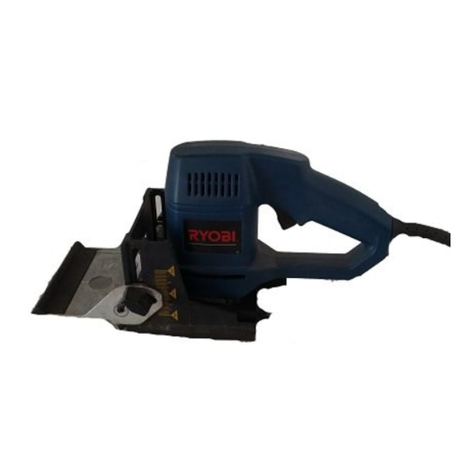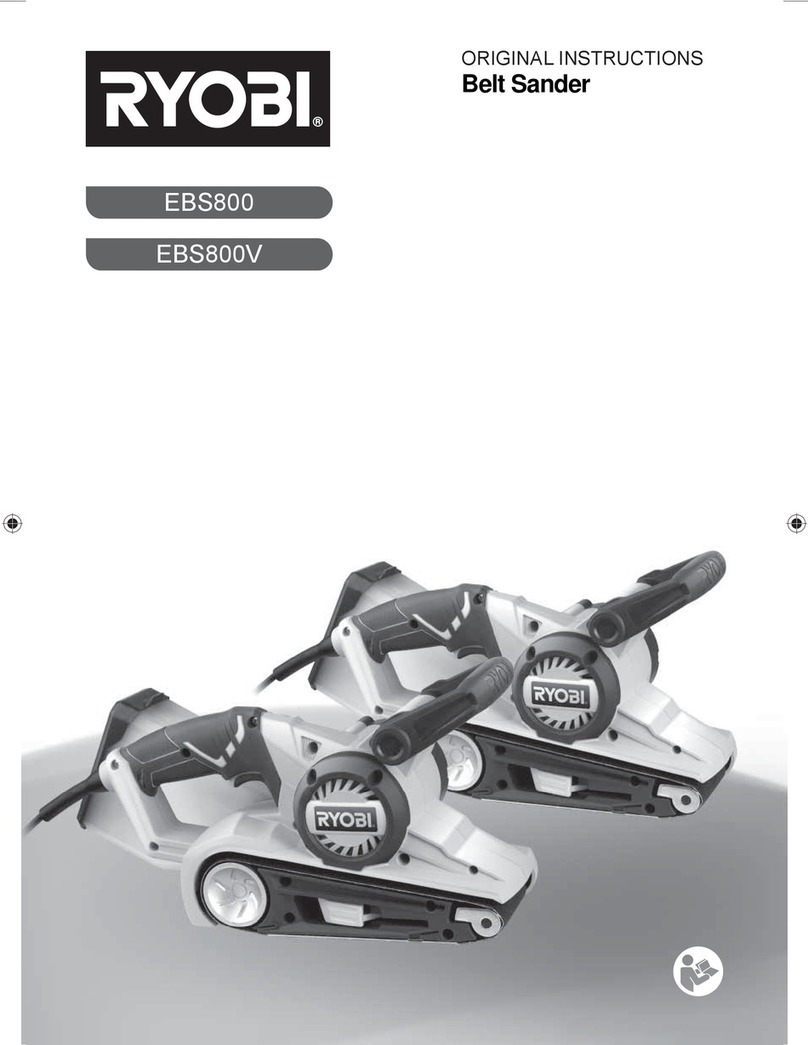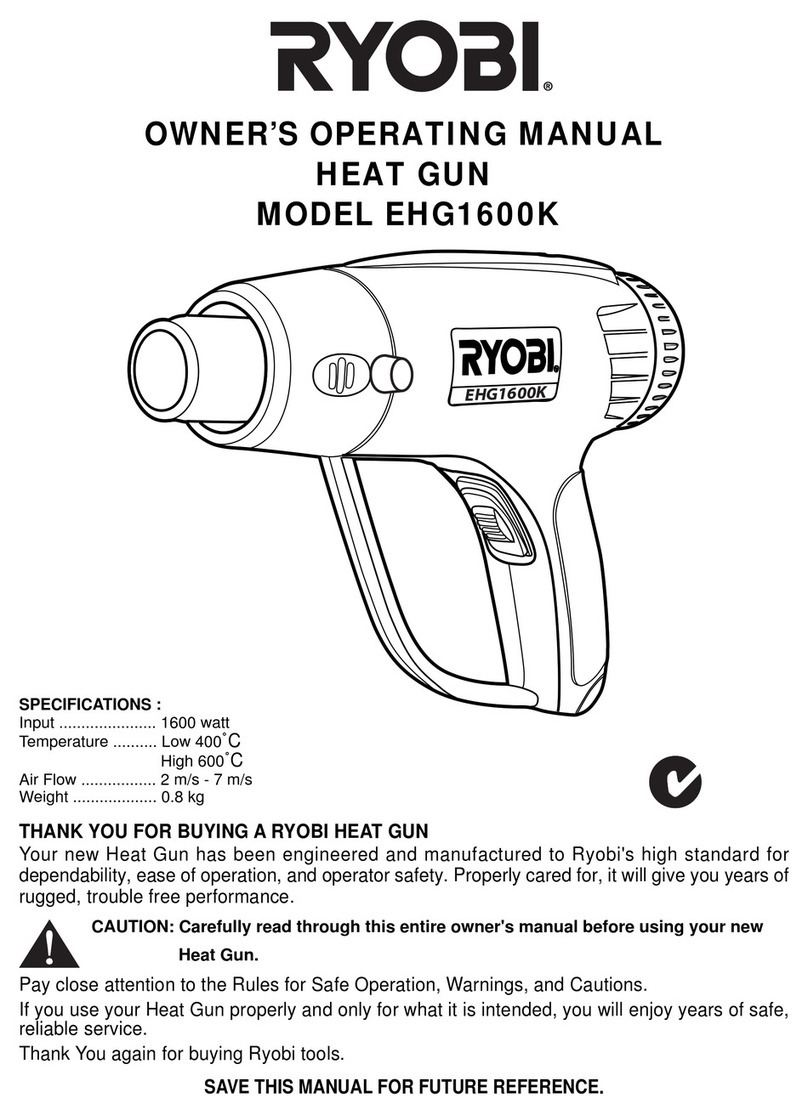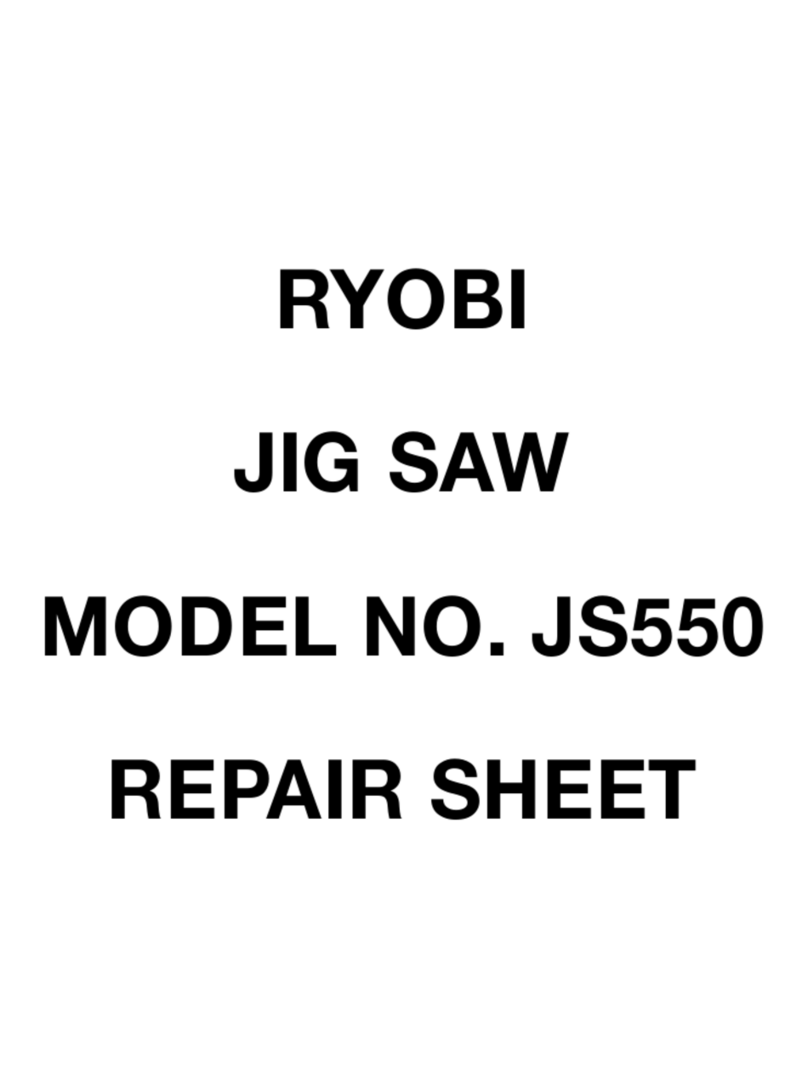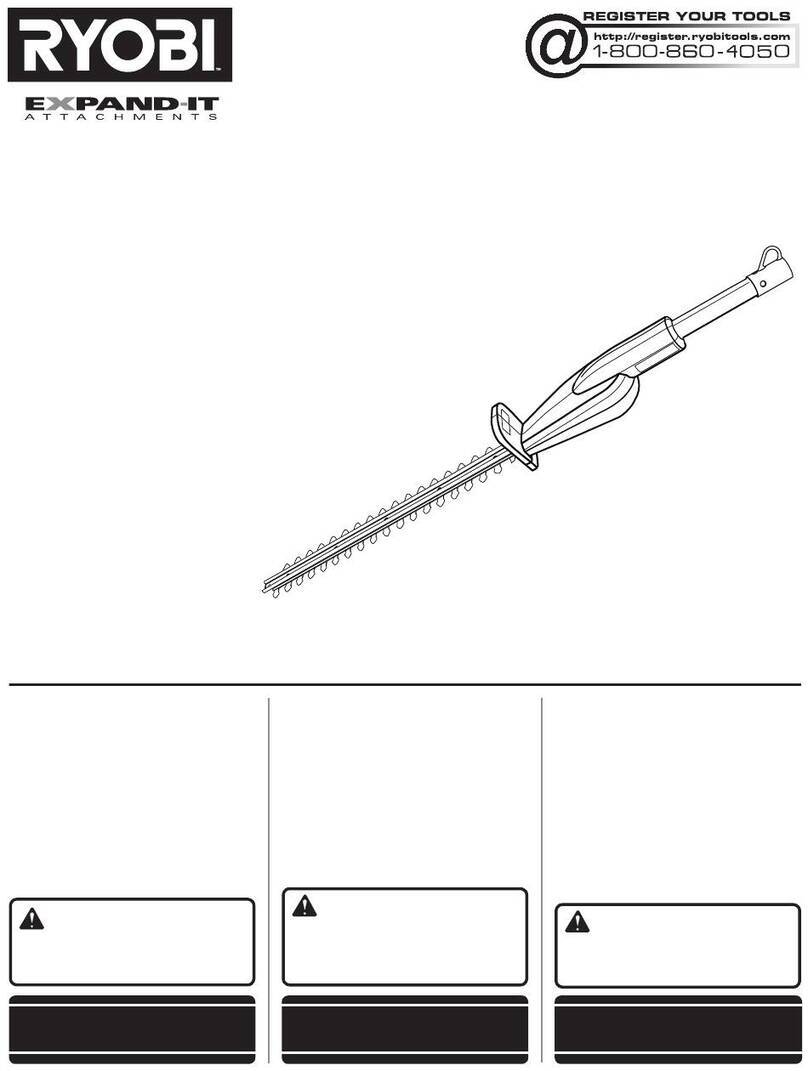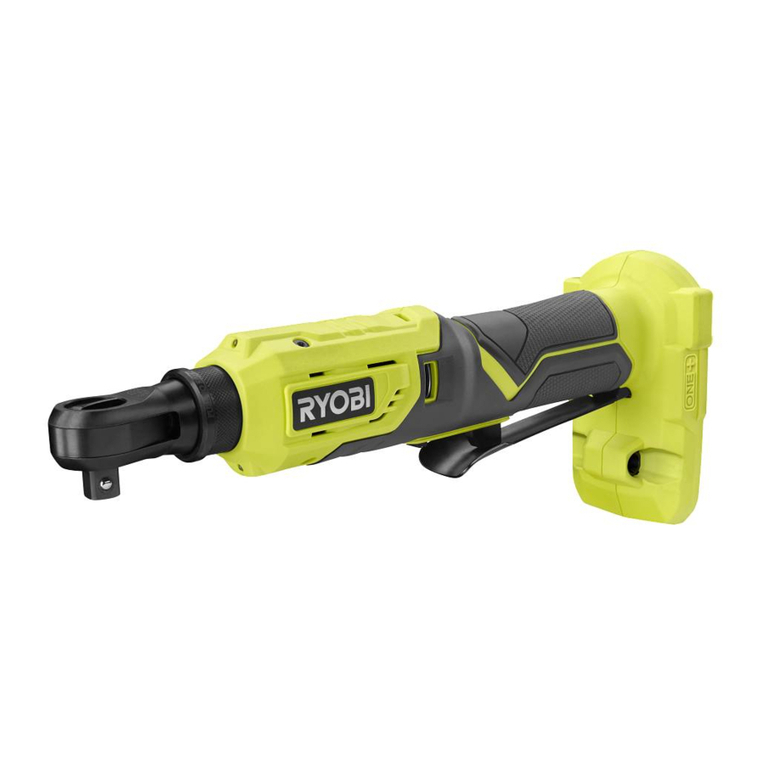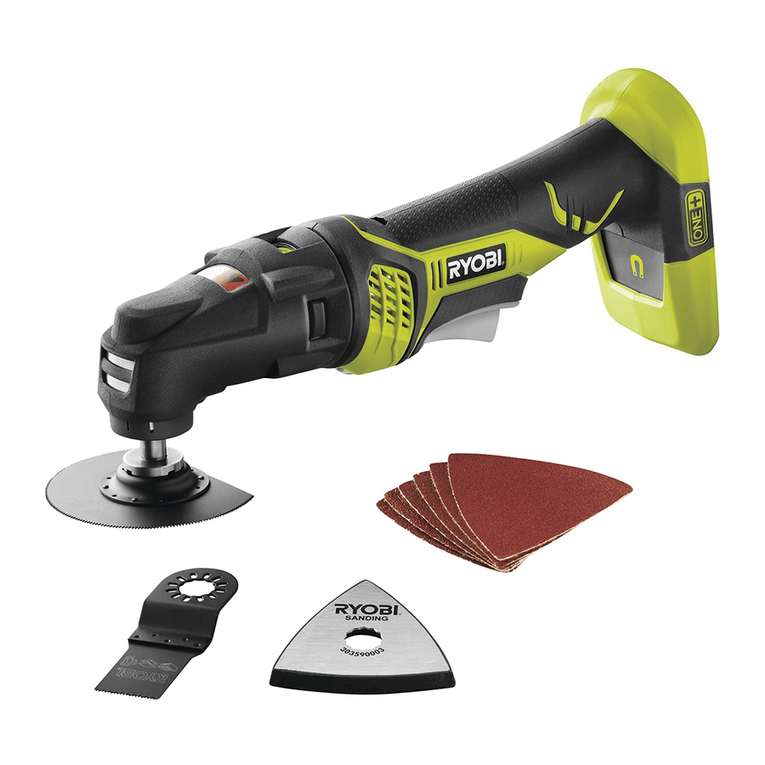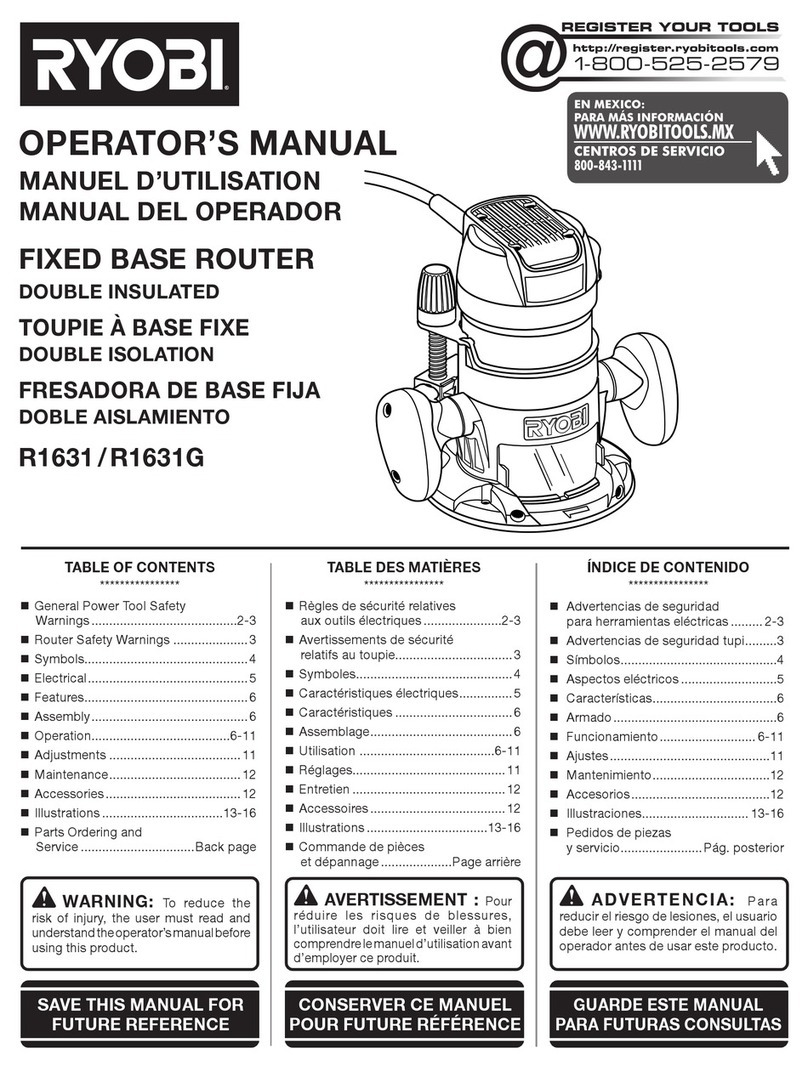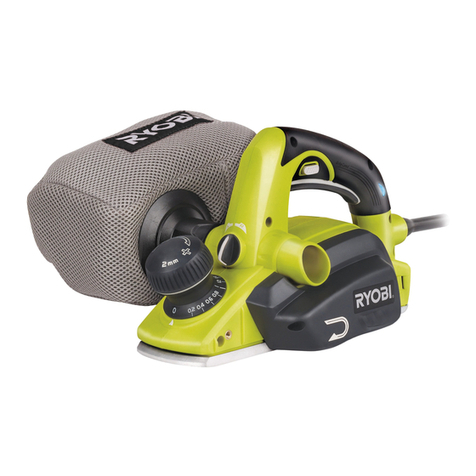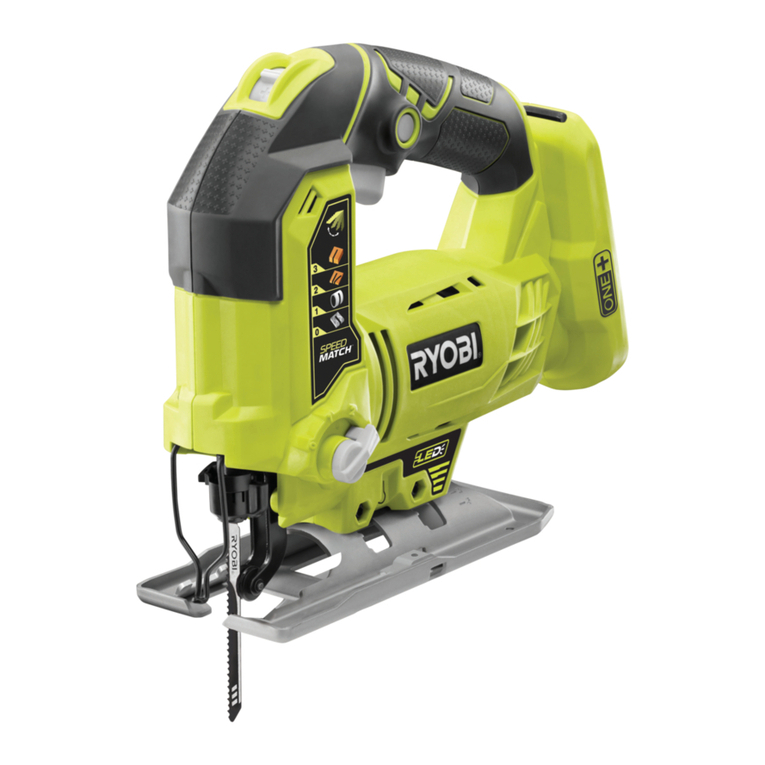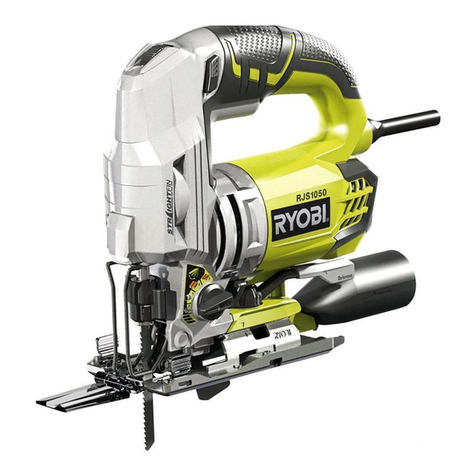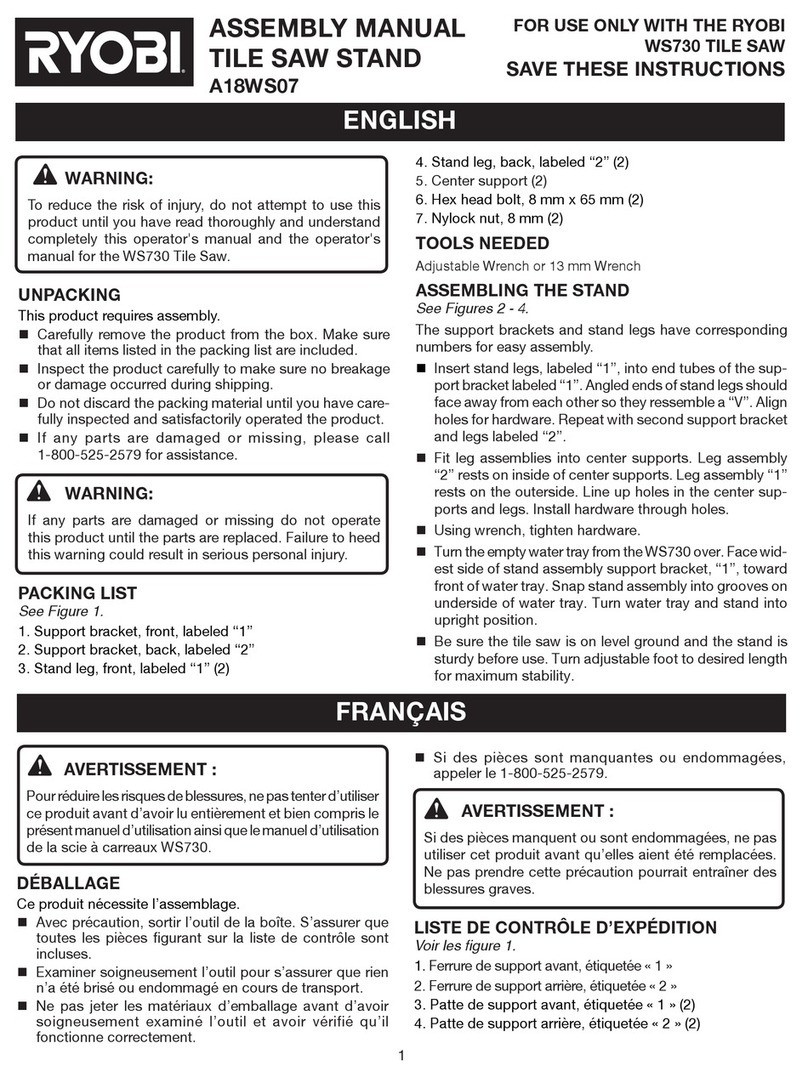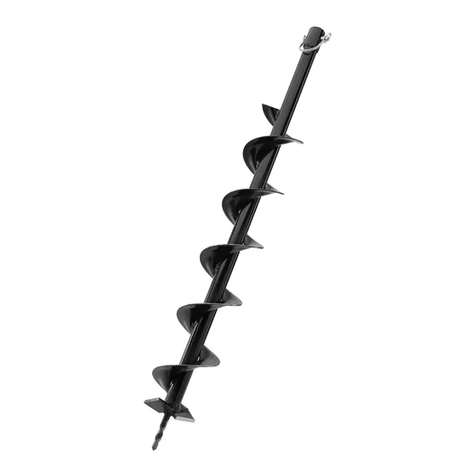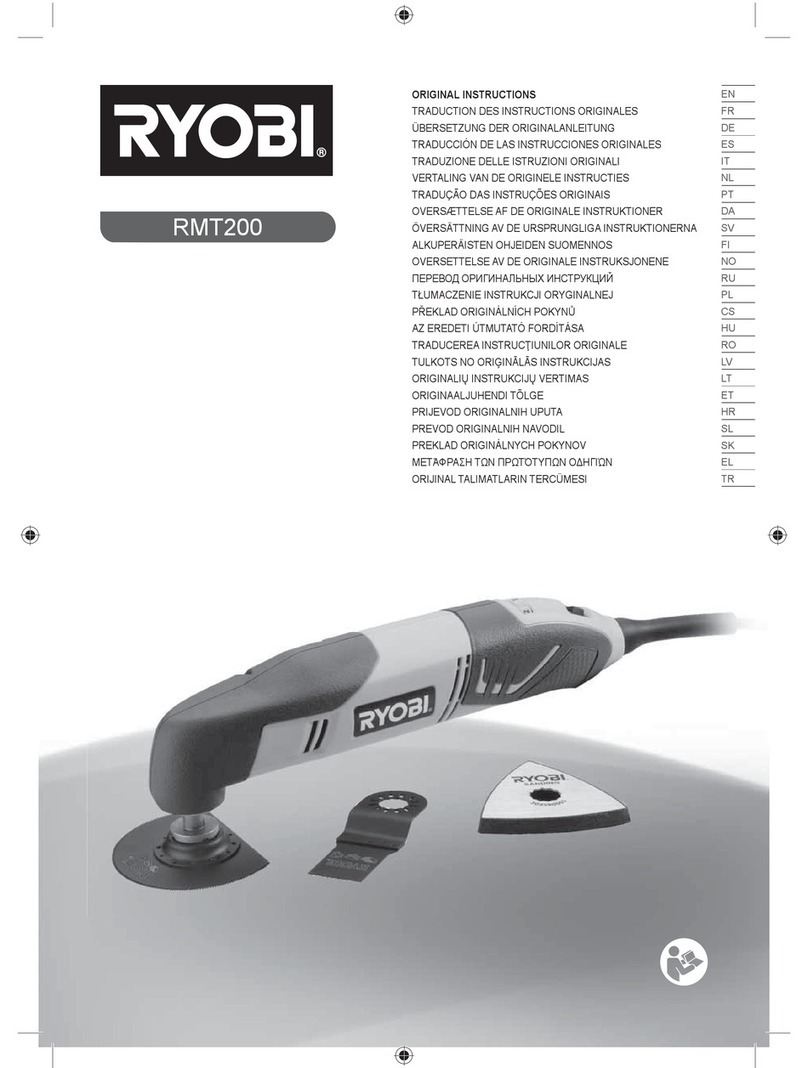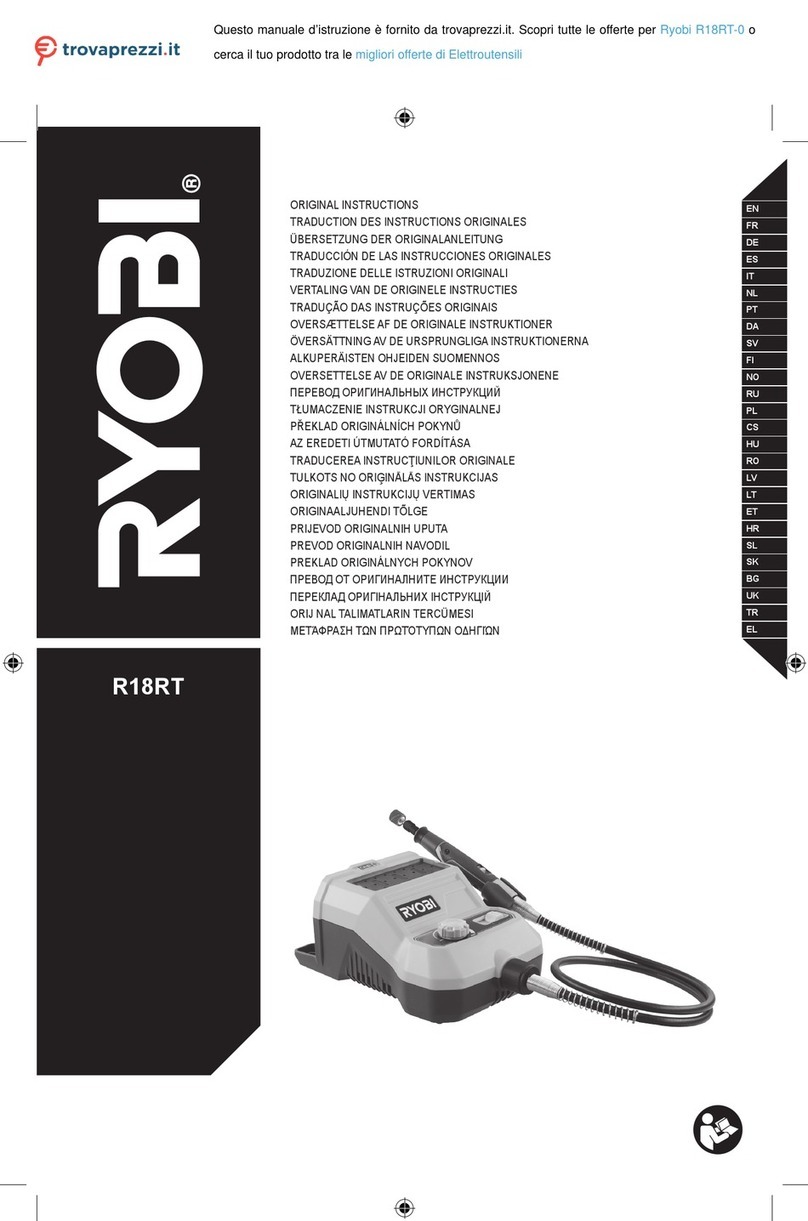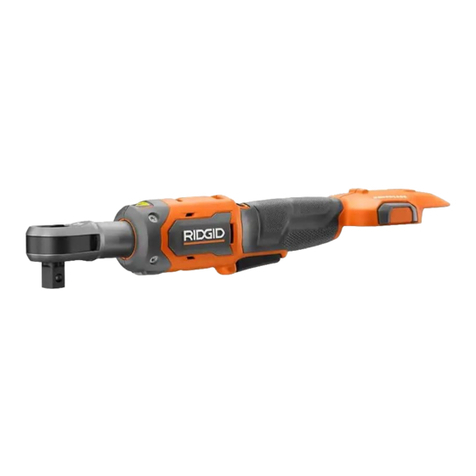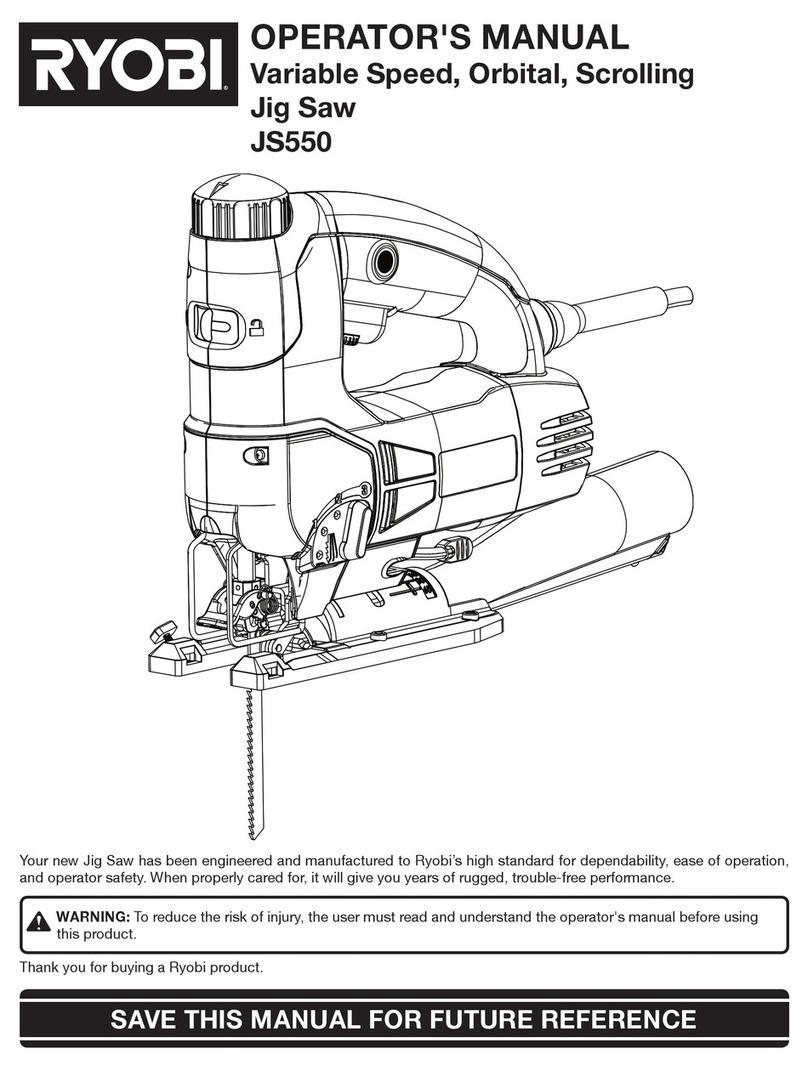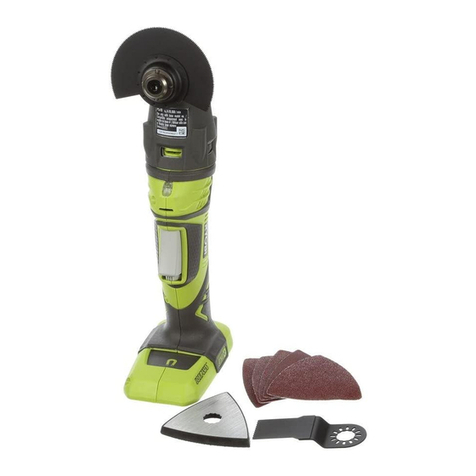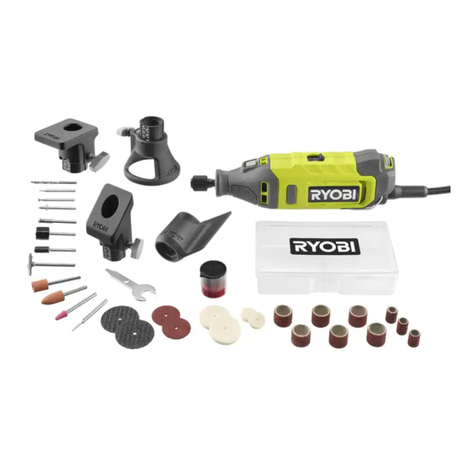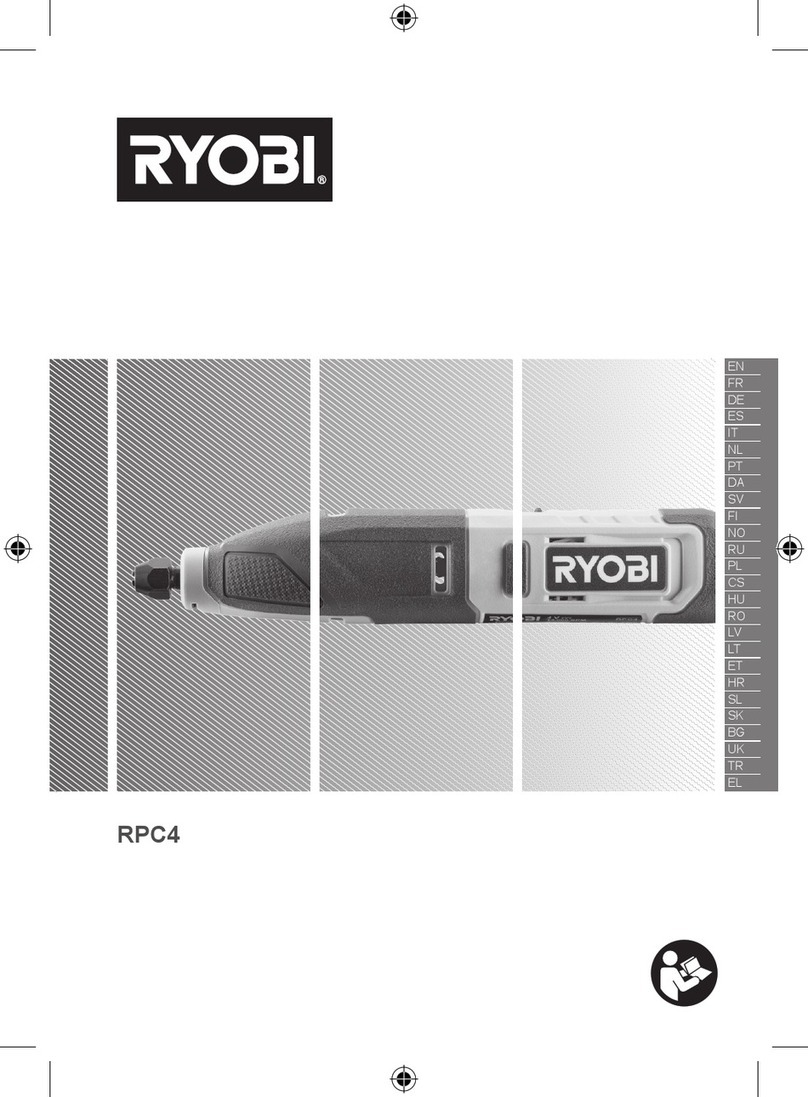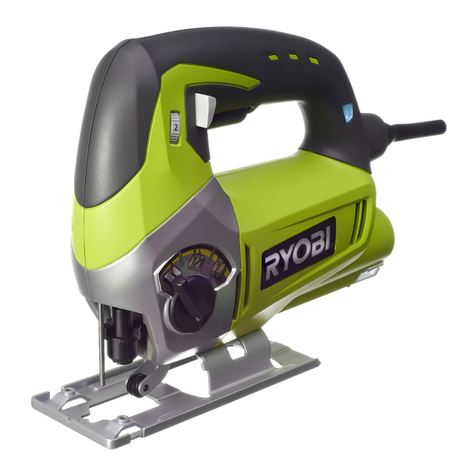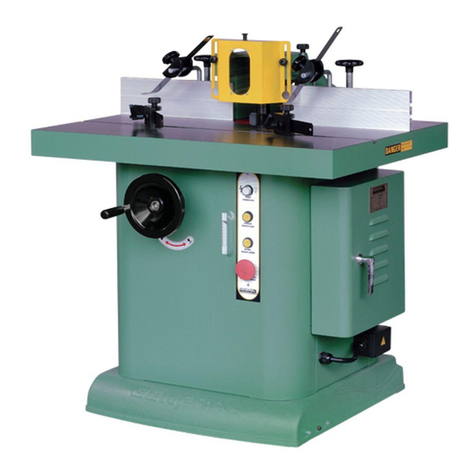
2
English
GB
FR DE ES IT NL PT DK SE FI NO RU PL CZ HU RO LV LT EE HR SI SK GR TR
SPECIFICATIONS
Voltage 230 V - 240 V 50 Hz
No-load speed 14000-31500 min-1
Input power 1400 W
Plunge depth 55 mm
Collet size 1/4 in or 6 mm or 8 mm
Net weight 4.3 kg
APPLICATIONS
Use your router only for the purposes listed below:
routing grooves, shaping edges, freehand designs,
etc., in wood
chamfering, rabbeting, dadoing, and dovetailing in
wood
routing edges on laminates
FEATURES
Your plunge router is a versatile woodworking tool that will
give you years of trouble-free performance. It is engineered
with the professional in mind, but its ease of operation allows
the amateur to produce work that is beautiful and precise. As
the name implies, your plunge router can be used for making
plunge cuts in workpieces, routing grooves, edge routing,
routing circles, and freehand routing.
When used with recommended accessories, such as a
router table, depth adjustment knob, and straight guide,
it becomes even more versatile. Various types of cutters,
both with and without roller bearings as guides, also add
to the versatility of this tool.
CHIP SHIELD
A plastic chip shield has been provided on the base of
your router for protection against ying dust and chips.
It is designed to t the front opening of the router base.
SPINDLE LOCK
The spindle lock secures the spindle so that only one
wrench is needed to loosen collet nut and change cutters.
To operate push the button whilst loosening the collet.
NOTE: Do not run router with spindle lock engaged or use
as a brake to stop the router.
VARIABLE SPEED
Your router has advanced electronic features, designed to
assist you in getting the maximum use from your router. By
making proper speed selections, your tool can be adjusted
to specic routing needs.
The electronic feature of your tool introduces the exibility
of adjusting the motor speed to required job conditions. An
electronic speed control module senses the load applied
to the motor and increases or decreases motor voltage to
compensate for and maintain desired RPM. Speed can be
set according to the approximate cutter diameter you will
be using and to the hardness of the material being cut.
The best cuts are made when the cutter is fed through
material at the proper rate of feed.
Plunge lock lever shown after extended wear
See Figure 15.
Plunge lock lever shown in original locked position
See Figure 16.
TEMPLATE GUIDE
See Figure 17.
The template guide can be tted to the base of the router
to accurately duplicate curves and other complex shapes.
These shapes can be easily made by using a jigsaw to cut
out a template. Fix the guide to the base of the router by
removing the two screws retaining the dust extraction port,
placing the guide in the recess provided in the base and
replacing the screws. The dust extraction port must be in
place when tting the guide to hold the screws.
The guide protrudes below the bottom of the base allowing
the router to follow the template, which must be securely
xed to the workpiece and a rm pressure applied to the
router at all times to ensure that the edge of the guide
accurately follows the template.
The template must be at least 5 mm thick to allow for the
protrusion of the guide. Allowance must also be made in
the template for the distance between the cutting edge of
the bit and the outside edge of the template guide.
ERGONOMIC DESIGN
The design of this tool provides for easy handling; it is
designed for comfort and ease of grasp when operating in
different positions and at different angles.
ELECTRICAL CONNECTION
Your router has a precision built electric motor. It should
only be connected to a power supply of the type specied
on the rating plate of the machine, AC only. Do not operate
this tool on direct current (DC). Avoltage drop of more than
10 percent will cause a loss of power and overheating.
If your tool does not operate when plugged into an outlet,
double-check the power supply.
DOUBLE INSULATION
Double insulation is a concept in safety in electric power
tools, which eliminates the need for the usual three-wire
grounded power cord. All exposed metal parts are isolated
from the internal metal motor components with protecting
